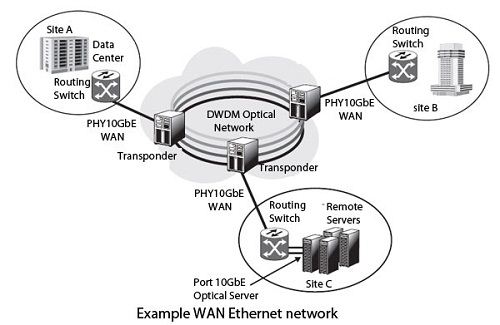Ethernet on the WAN aims to transport Ethernet frames over long distances like states, countries, or the whole world, while providing quality service. Its advantages are a very low cost, the possibility of oversizing of the network, highly granular, well known technology and very simple and finally simplified management, since Ethernet is everywhere. You can go very fast in throughput with different levels of 1 and 10 Gbit/s and soon the 100 Gbit/s. The register of difficulties include the lack of reliability, packet loss less controlled and quality of services more difficult to obtain. However, several technologies are currently being developed to address these issues and provide a royal way for the arrival of Ethernet on the WAN.
Two major initiatives in this direction, the working group IEEE 802.17 RPR, whose objective is to achieve the reliability of SONET / SDH, X.86 and that of the working group of the ITU-T, which examines correspondence to be found between SONET and Ethernet frame type technique.
The Ethernet frame has essentially been used in local networks and was dimensioned in this context. For long distances, much larger frames are necessary, particularly to achieve synchronization of clocks. We speak of superframes allowing synchronization and carrying a large number of traditional Ethernet frames.
Figure shows a first WAN Ethernet solution in which businesses, connected by a heart 10GbE network using wavelength division multiplexing techniques. Interconnection with the core network is done by transponders, which can be optical or op to electronic type OTN (Optical Transport Network).
Another solution is to interconnect Ethernet switches with very high flow very far. They are called for it to Ethernet connections very high speed (1-10 Gbit / s and soon 100 Gbit/s). Long distance and high speed required to maintain the synchronous clocks to allow proper recovery bits. For that, the long distance links must choose WAN-PHY solution IEEE 802.3ae.

 Dinesh Thakur holds an B.C.A, MCDBA, MCSD certifications. Dinesh authors the hugely popular
Dinesh Thakur holds an B.C.A, MCDBA, MCSD certifications. Dinesh authors the hugely popular